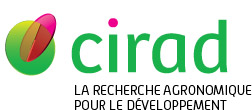Benegas Laura, Ilstedt Ulrik, Roupsard Olivier, Jones J., Malmer Anders. 2014. Effects of trees on infiltrability and preferential flow in two contrasting agroecosystems in Central America. Agriculture, Ecosystems and Environment, 183 : 185-196.
|
Version publiée
- Anglais
Accès réservé aux personnels Cirad Utilisation soumise à autorisation de l'auteur ou du Cirad. document_572141.pdf Télécharger (1MB) |
Quartile : Outlier, Sujet : AGRICULTURE, MULTIDISCIPLINARY / Quartile : Q1, Sujet : ENVIRONMENTAL SCIENCES / Quartile : Q1, Sujet : ECOLOGY
Résumé : We tested the hypothesis that trees have measurable effects on infiltrability, macroporosity, and pref-erential flows in agrosilvopastoral systems. Managing agricultural systems for water conservation is acritical component of sustainable systems. We investigated the relationship between infiltrability andthe distance to the nearest tree, and whether differences in macroporosity can account for differences ininfiltrability.In both systems, preferential soil water flows were dominant compared to matrix flow. Trees in thepasture landscape improved infiltrability and preferential flow but had no significant effect in the coffeeagroforestry system. After comparing rainfall intensity and frequency data to the measured infiltrabilityvalues, we conclude that trees in the pasture system reduce surface runoff at the highest observed rainfallintensities (>50 mm h?1). The volcanic soils of the coffee plantation are less degraded and their highnatural permeability has been maintained. Since the coffee plants at this site are established (40 years)perennial vegetation with substantial residues and extensive root systems like trees, they improve soilphysical properties similarly to trees.Trees increase hydrologic services in pasture lands, a rapidly expanding land use type across LatinAmerica, and therefore may be a viable land management option for mitigating some of the negativeenvironmental impacts associated with land clearing and animal husbandry. However, in land manage-ment practices where understorey perennial vegetation makes up a large proportion of the cover, suchas for coffee agroforestry systems, the effect of trees on infiltration-related ecosystem services could beless pronounced.
Mots-clés Agrovoc : agroforesterie, culture associée, ruissellement, perméabilité du sol, système racinaire, conservation des sols, transport des substances nutritives, structure agricole, utilisation des terres, pâturages, écosystème forestier, écologie
Mots-clés géographiques Agrovoc : Costa Rica, Honduras
Classification Agris : F40 - Écologie végétale
F08 - Systèmes et modes de culture
K01 - Foresterie - Considérations générales
F61 - Physiologie végétale - Nutrition
P33 - Chimie et physique du sol
Champ stratégique Cirad : Axe 1 (2014-2018) - Agriculture écologiquement intensive
Auteurs et affiliations
- Benegas Laura, CATIE (CRI)
- Ilstedt Ulrik, Swedish University of Agricultural Sciences (SWE)
-
Roupsard Olivier, CIRAD-PERSYST-UMR Eco&Sols (CRI)
 ORCID: 0000-0002-1319-142X
ORCID: 0000-0002-1319-142X
- Jones J., GIZ (DEU)
- Malmer Anders, Swedish University of Agricultural Sciences (SWE)
Source : Cirad - Agritrop (https://agritrop.cirad.fr/572141/)
[ Page générée et mise en cache le 2024-11-18 ]




